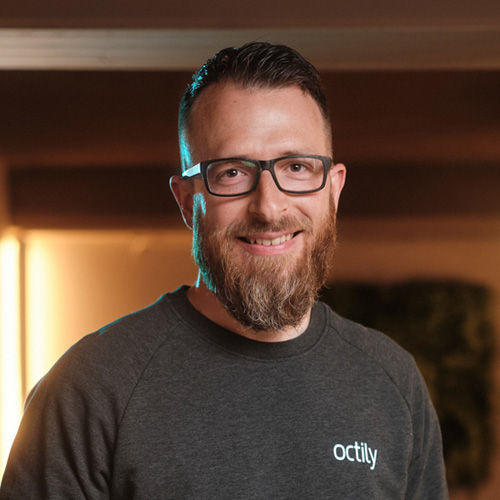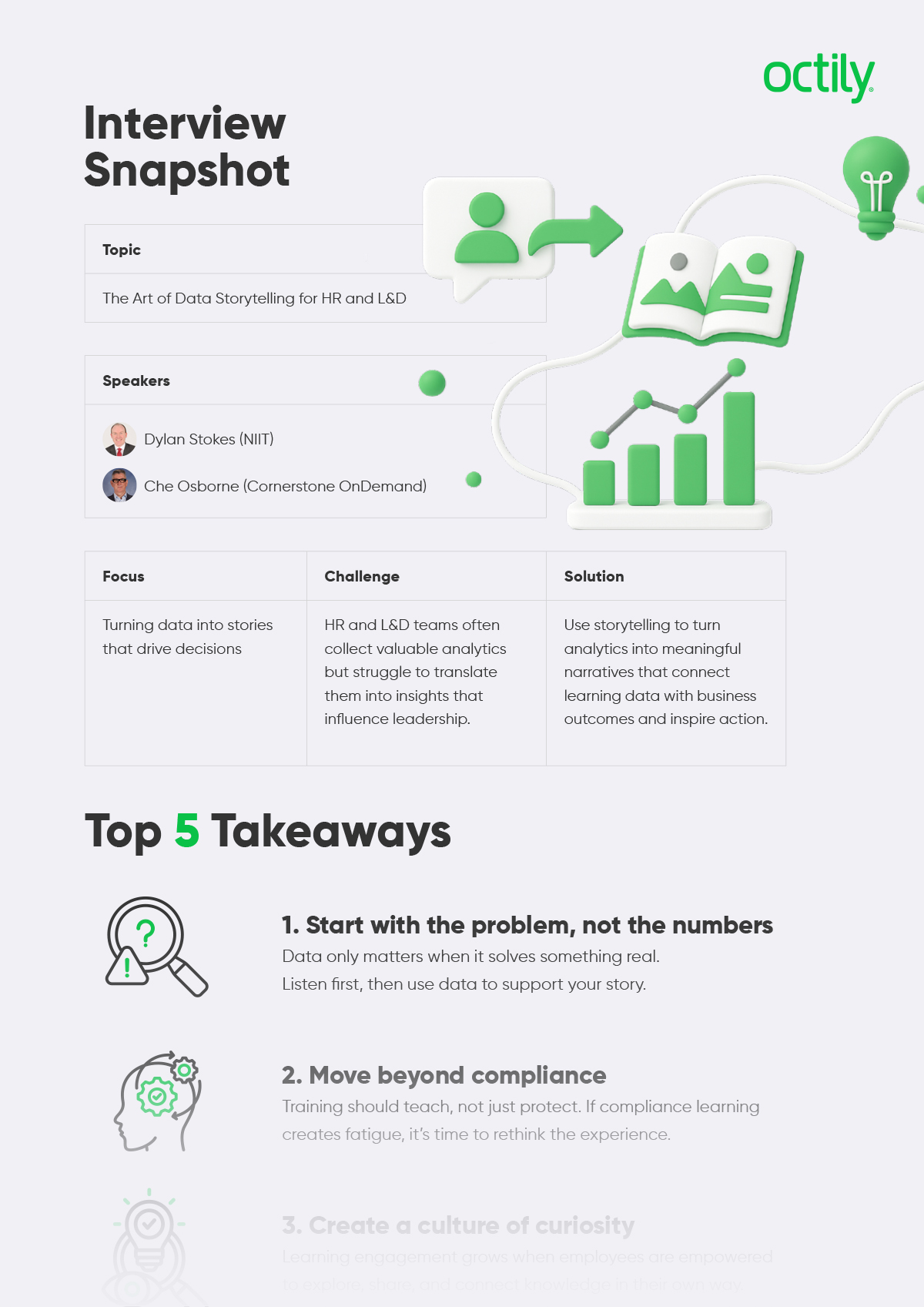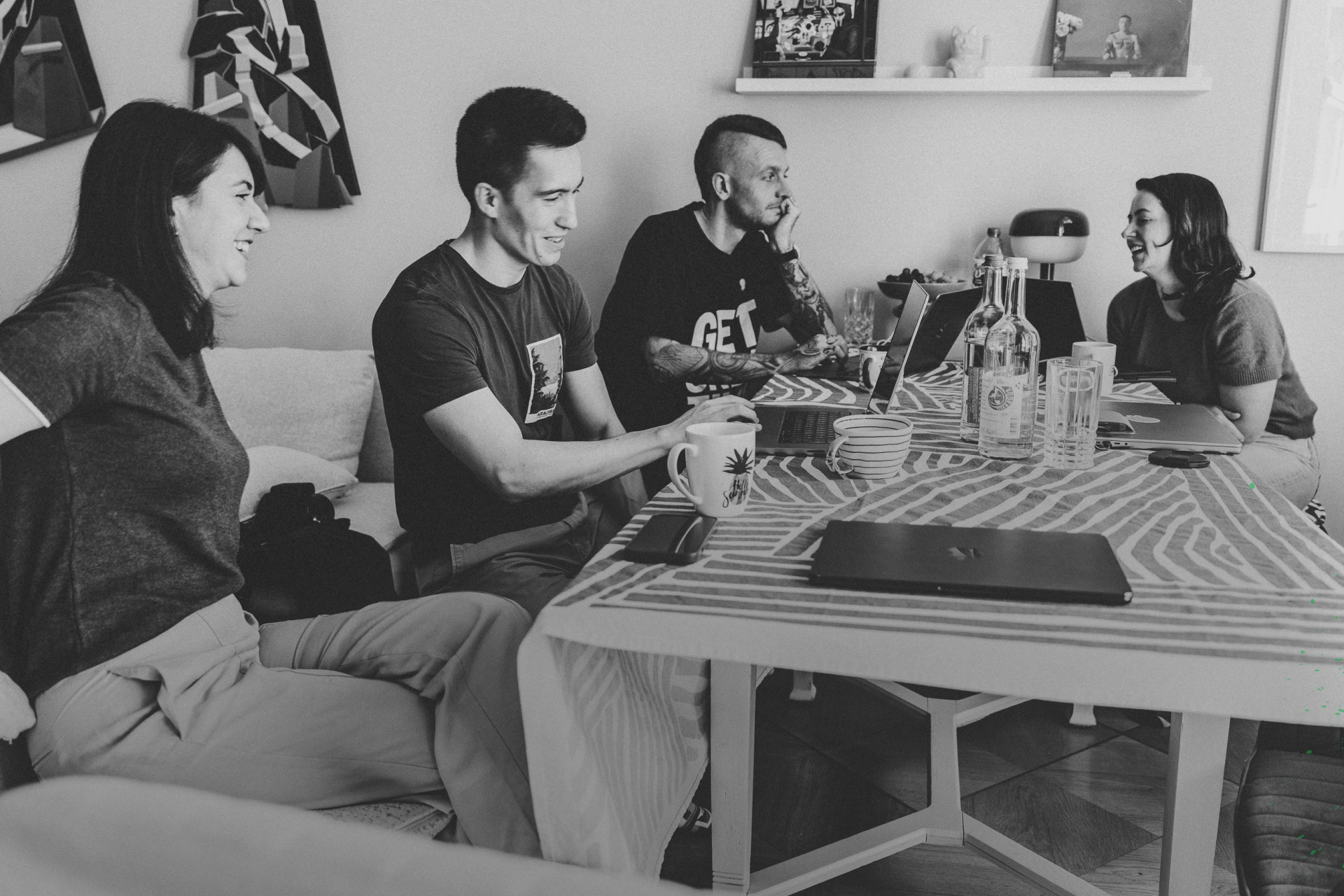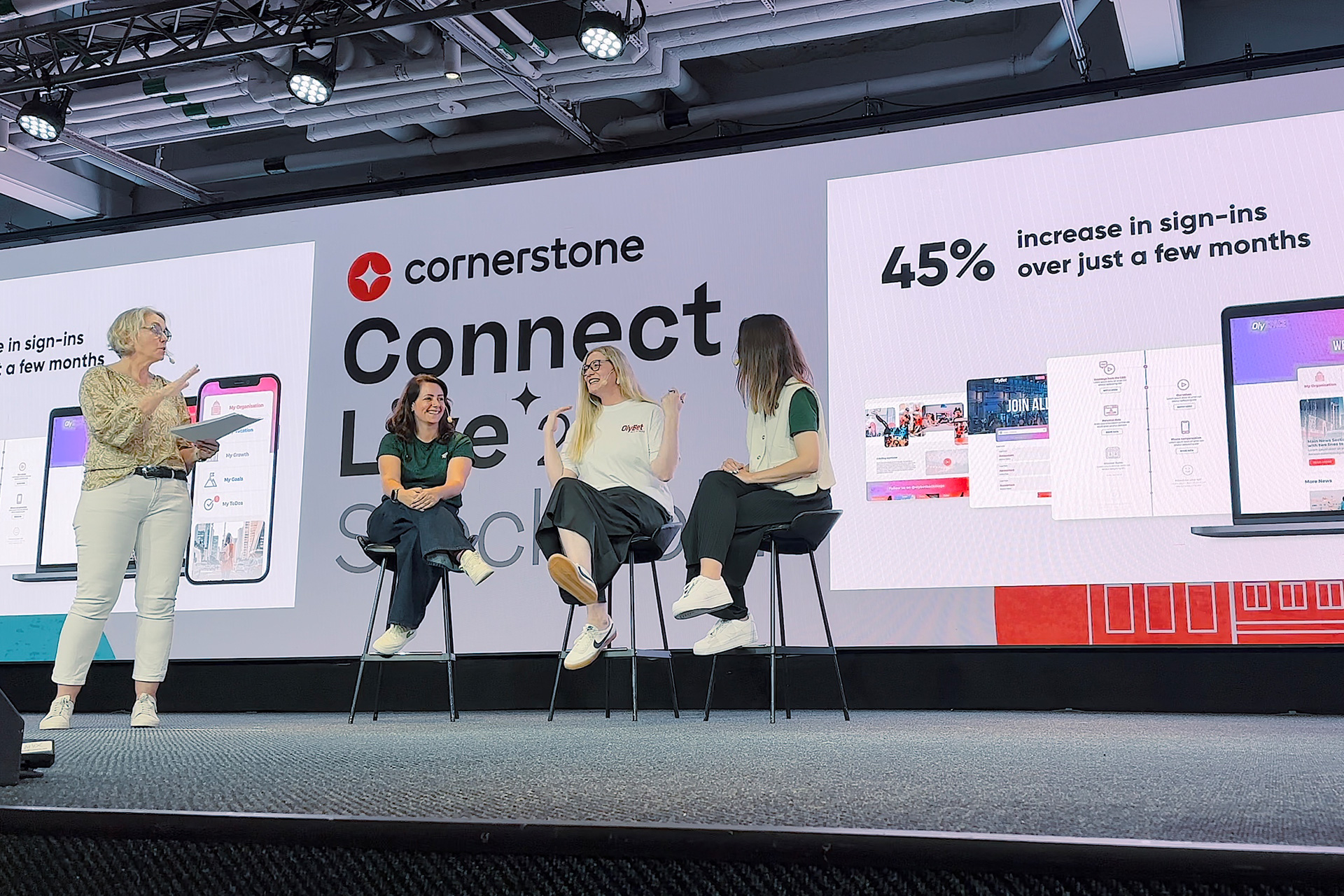
NIIT

Cornerstone OnDemand

Octily
Thinking about making the switch to Cornerstone Learn?
Turning numbers into narratives is what separates information from influence.
In this 5Q5A interview, Rob Bucher brings together Dylan Stokes from NIIT and Che Osborne from Cornerstone OnDemand to explore how HR and L&D teams can transform their data into stories that engage leaders, connect learning with business outcomes, and make strategy measurable.

A practical guide to data storytelling
- How to turn data into stories that drive decisions
- Why compliance learning should teach, not just protect
- How curiosity builds a stronger learning culture
- How to connect analytics with business outcomes
- Why storytelling keeps learning human in the age of AI
What makes a great data-driven story?
Rob:
“Many teams collect data, but few turn it into something that influences decisions. What does a great data-driven story look like to you?”
Dylan:
“Data has to tell a story, otherwise it is useless. You always need to start by understanding the problem, not by showing the numbers. Once you know why a client wants to make a decision, whether it is cost, engagement, or efficiency, that is when data becomes meaningful. Too often, people lead with data instead of listening first. Storytelling with data only works when you understand why it matters.”
Che:
I completely agree. The same applies to learning data. Saying employees completed seven hours of training per year does not say much. What matters is whether those seven hours made them better at their jobs, more engaged, or happier. Data should not just record activity; it should reveal value and help drive improvement.
About the Speakers

Dylan Stokes
A UK-trained barrister and strategist with decades of experience in learning and HCM technology, Dylan helps organizations improve learning outcomes through smart design, compliance strategy, and data storytelling.

Che Osborne
With experience across 7,000 global customers, Che helps organizations connect people, platforms, and performance through data-driven decision-making and engaging storytelling.
How can organizations make learning data more meaningful?
Rob:
“At Cornerstone’s recent event, someone proudly said their employees now learn seven hours a year. It made me wonder if that is really enough. What is your take on that?”
Dylan:
“If compliance learning creates fatigue, we have failed. It should not be written by lawyers for lawyers and handed to everyone. It should teach, not just protect. When learning connects with real work, that is when it creates what I call capacity uplift. You save time, money, and help people grow. It is about giving the right learning to the right people at the right time and letting them take it in their own rhythm.”
Che:
“That is why we brought everything together in Cornerstone Galaxy. Learning is not just about compliance; it is about engagement. With five generations in the workforce, everyone learns differently. Some like to read, others prefer podcasts or immersive experiences. The key is to make learning flexible and meaningful, wherever and whenever it happens. When people feel empowered to learn, they stay curious and engaged.”
Rob:
“So it comes back to curiosity and culture rather than just counting completions.”
“You can have all the data in the world, but if you do not tell the story well, nobody listens.”

Cornerstone OnDemand
When does data storytelling fail?
Rob:
“You both mentioned the importance of context. Where do you see data storytelling go wrong?”
Dylan:
“It usually fails when people stop listening. Sometimes what seems like a system issue is really an interpretation problem. Before jumping to conclusions, you need to ask questions and understand the full picture. Only then can you use data to guide decisions. I always say, understand the problem first, then let the data support your story.”
Che:
“Exactly. Many teams look at the same dashboards every week and stop asking whether the data is actually useful. You need to keep checking if it still reflects what matters to the business. I always start by asking: what is the company trying to achieve? Then I look for the data that aligns with that. If the data is not actionable, it is not the right data.”
Rob:
“That resonates. We often see clients look at metrics out of habit, not insight.”
How can HR and L&D teams use data to influence leadership?
Rob:
“HR teams are often doing amazing work but still struggle to prove their impact. How can they use data to make leadership listen?”
Che:
“Start with the business question, not the dashboard. Leadership does not care how many reports you can pull; they care about impact. If you can show that learning has reduced time to productivity or improved performance, that tells a story. Data becomes influence when it connects to outcomes that leadership values.”
Dylan:
“HR can be fragmented across functions, but data brings everything together. It connects learning, performance, and talent strategy. Predictive analytics can help HR anticipate what skills will be needed in the next few years. The faster HR teams can connect technology and data, the more valuable they become to the business.”
Rob:
“So it is less about the report and more about the relevance of the story it tells.”
What role will storytelling play in the age of AI?
Rob:
“Looking ahead, as AI reshapes how we collect and visualize information, what role will human storytelling play?”
Dylan:
“Storytelling will always matter. I used to be a scout leader, and sitting around a campfire sharing stories was the best way to teach and learn. I hope that spirit never disappears. Even with AI, the human connection through stories will remain how we share knowledge and build understanding.”
Che:
“I agree. People still want to hear stories. Whether it is a TED Talk, a video, or a fireside chat at a conference, storytelling keeps us engaged. You can have all the data in the world, but if you do not tell the story well, nobody listens. Platforms and technologies will evolve, but storytelling will always be how people learn and connect.”
Rob:
“And maybe that is the perfect way to end – numbers inform, but stories inspire.”
“HR has never moved this fast. The only way to keep up is to use data to predict what comes next.”

NIIT
Final thoughts
Rob:
“What shall be your famous last words?”
Dylan:
“Keep on learning.”
Che:
“Stay inquisitive.”

Got inspired? Let’s talk about your data story
Whether you are exploring how to use analytics in Cornerstone, or want to make your learning strategy more impactful, we can help you turn your data into decisions.
From building dashboards that tell a story, to connecting insights with design and communication, we help HR and L&D teams shape learning experiences that make sense, and make an impact.
Or reach out at octily@octily.com, book a meeting, and create your customization wishlist at octily.com to start your journey.


